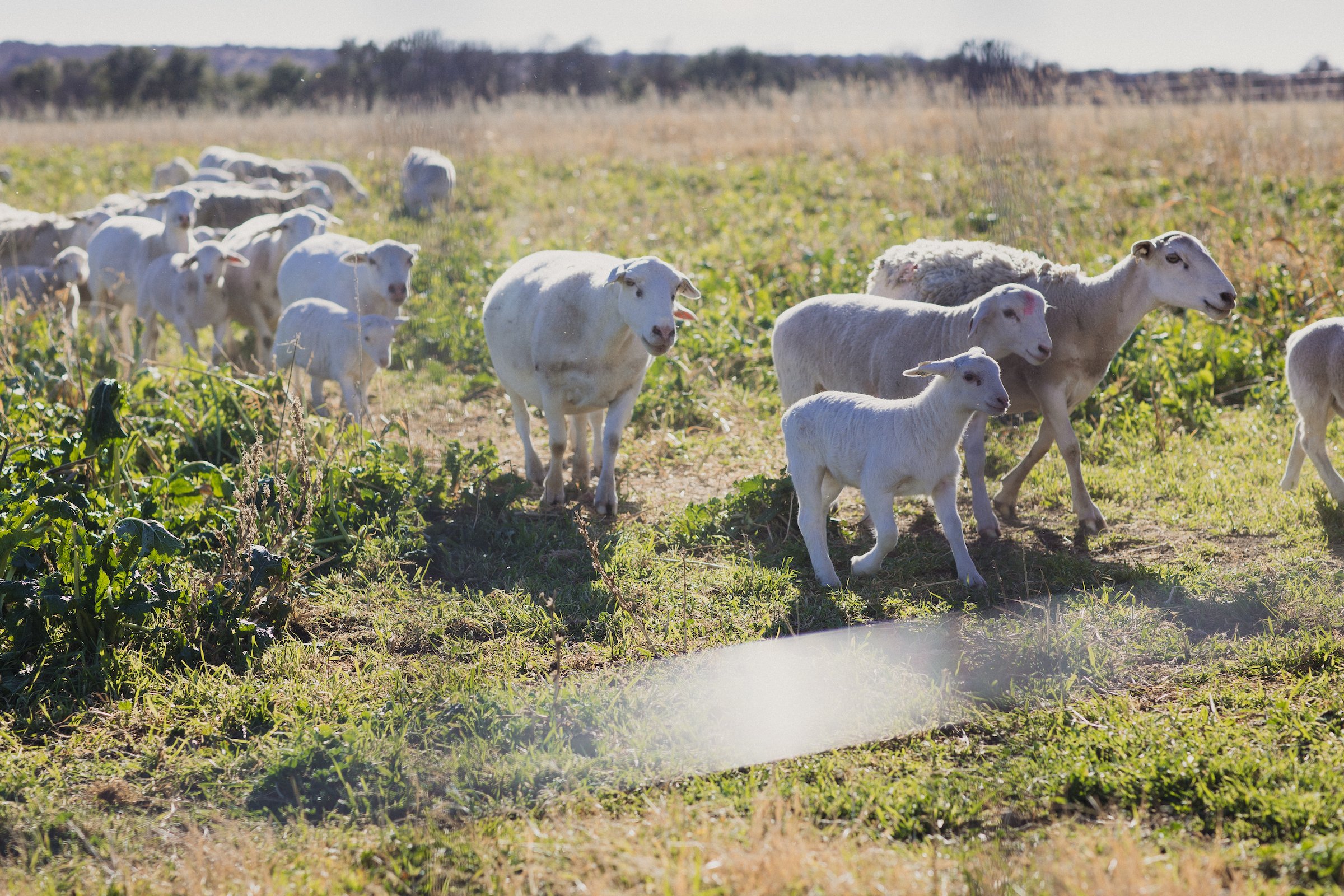Trent Hendricks of Cabriejo Ranch (Missouri)
At the age of 10, Trent Hendrick’s father bought him his first ram and 50 ewes, and he’s been raising lamb ever since. But his passion didn’t start there, raising lamb was something he was born into, with his family raising sheep well before Hendricks took his first steps.
Today, Hendricks and his wife, Rachel, along with their six children, run Cabriejo Ranch in the Missouri Ozarks where they produce grass-fed beef and lamb and run a large solar grazing operation across the Midwest and Southeast states as part of their regenerative land and vegetation management services.
Hendricks didn’t initially set out to start a solar grazing business, but opportunity came knocking when a large solar company approached him to manage their land with environmental benefits beyond just keeping the grass short. They wanted to implement regenerative agriculture practices to restore ecosystems, sequester carbon, restore soil health, and improve water quality. Today, his solar grazing operation focuses on large-scale solar sites where he “follows the grass,” with sheep grazing mainly from April or May through Thanksgiving, before they come home to lamb during the winter months.
At the heart of his solar grazing operation, there’s a strong focus on stewardship.
“We've been given an opportunity to live on the land and work with livestock. And so, our goal is to be the best stewards of that gift,” says Hendricks.
Through the Savory Institute’s Ecological Outcome Verification™ (EOV) Program, Hendricks can measure the impact of his solar grazing operation. The EOV Program conducts an annual assessment on the fields where Hendrick’s sheep graze, showing a positive trend line in the regeneration of the land and provides owners with a report showcasing the positive impacts that are taking place, such as improved soil health, biodiversity, and ecosystem function.
Because of his work with the Savory Institute, the lamb Hendrick’s sells to consumers carries the Savory Institutes “Land to Market” seal, differentiating it as a regenerative product.
Hendricks’ passion for what he does drives how he does it, like many American lamb farmers and ranchers.
“You know… no one knows how you helped a little lamb survive or when you took care of an ewe that was down for seven days before she lambed—the heart and the sacrifice that goes into that,” said Hendricks. “Grazing our sheep on the solar fields helps the land and the animals; the way we run our operation is done with a lot of heart and humility. We are constantly learning and working to improve what we do, and so are most farmers and ranchers. We are stewards of these animals, and we take that really seriously.”
Dr. Judy St. Leger of Dutch Barn Farm
After purchasing a historic farmstead in the Mohawk River Valley of New York, Judy St. Leger and her husband set out to improve the quality of the land. She brought in sheep and goats to graze, starting with just six and growing to her current flock of 250.
Knowing that agricultural land was shrinking and looking for opportunities to benefit her community, she got into the targeted grazing business, grazing first on nonherbicide cemeteries before a friend introduced her to solar grazing. Today, St. Leger serves as Executive Director of the American Solar Grazing Association (ASGA) and was one of its founding members. She typically grazes her sheep in upstate New York from the beginning of May to the end of October.
As a veterinarian, St. Leger understands the unique symbiotic relationship between sheep and solar fields. The fields offer a protected area for sheep to graze, shade during the hottest part of the day, and plenty of vegetation to munch on. Sheep keep the vegetation low, protecting the solar panels from shade, and cycle nutrients back into the soil.
For St. Leger, it’s all about the sheep having a high quality of life every day and supporting farms who are doing the best they can for the animals.
Through her role with ASGA, St. Leger has watched as the solar grazing industry grew exponentially in recent years, especially in the Northeast where they had only three members a few years ago and almost 500 members today. Solar grazing is becoming more popular across the U.S., and Judy is advocating for solar grazing to be part of the
approval process for new solar fields, ensuring that the land is cared for while it’s producing energy.
“With agricultural lands shrinking, anywhere we can bring agriculture alongside other industries to benefit the land and keep agriculture sustainable is good,” says St. Leger. “If we can use solar grazing as a way to expand the sheep industry in the U.S. and change profitability for farmers in a way that improves the land, then I think it’s a win-win situation.”
The Way Ahead
Across the country solar grazing operations look slightly different, from the time of year to the type of vegetation that needs management. What is clear is that the mutually beneficial relationship between sheep and solar energy may hold the power to support food, fiber, and energy production in an environmentally responsible way. American lamb producers through collaboration and a focus on the entire ecosystem are shepherding a new way of thinking about the future of sheep and energy production.











